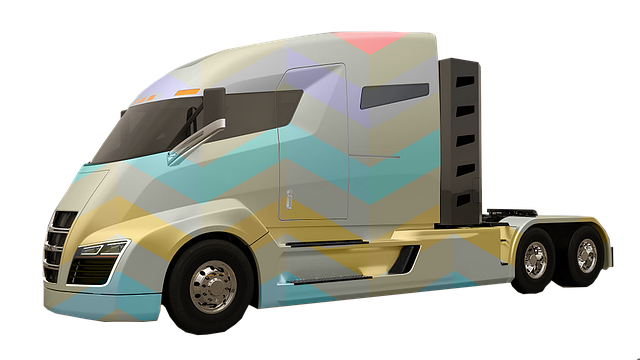Registering a car in California involves understanding specific requirements and gathering essential documents. This comprehensive guide walks you through each step, from confirming your vehicle’s identity through crucial VIN (Vehicle Identification Number) verification to submitting applications and paying fees at the DMV. By following these clear instructions, you’ll ensure a smooth process for registering your vehicle in the Golden State. Don’t miss key details on vin verification for a successful registration.
- Understand California Car Registration Requirements
- Gather Necessary Documents for VIN Verification
- Perform Vehicle Identification Number (VIN) Check
- Choose an Approved Title Service for Registration
- Submit Application and Pay Fees to DMV
Understand California Car Registration Requirements

Before registering your car in California, it’s crucial to understand the state’s specific requirements for vehicle identification number (VIN) verification. California requires a comprehensive inspection process that includes both visual and technical assessments. This involves checking the overall condition of the vehicle, its historical maintenance records, and ensuring all necessary documents are in order.
One efficient way to facilitate this process is through a mobile VIN inspection or using a mobile vin verifier. These services offer on-demand assessments, allowing you to verify your car’s history and compliance with California’s registration standards conveniently. A mobile vin verification service will provide real-time data on the vehicle’s past, including any accidents, title issues, or outstanding recalls, ensuring a seamless and accurate registration experience.
Gather Necessary Documents for VIN Verification

Before heading to the California Department of Motor Vehicles (DMV) to register your car, make sure you have all the necessary documents for VIN verification. The Vehicle Identification Number (VIN) is a unique code that identifies your vehicle and is essential during the registration process. Gather the following:
1. Your car’s title, if applicable.
2. Proof of ownership, such as a purchase agreement or previous registration records.
3. A valid driver’s license or state ID card.
4. The completed and signed Vehicle Registration Application form (DMV Form 716).
5. A current vehicle inspection report from a certified inspection station. This step is crucial for ensuring your car meets safety and emission standards, and it can be done at most auto repair shops or through mobile vin inspection services.
Perform Vehicle Identification Number (VIN) Check

Before registering your car in California, performing a Vehicle Identification Number (VIN) check is a crucial step. This process involves verifying the vehicle’s history and ensuring it meets all legal requirements. You can conduct a VIN verification through various methods, including using an online service or contacting the California Department of Motor Vehicles (DMV).
A mobile vin verifier or a vin inspection service can also facilitate this process efficiently. These services often provide instant access to detailed vehicle information, such as ownership history, accident reports, and outstanding loans. This added layer of scrutiny helps protect both buyers and sellers from potential fraud, ensuring that the car you’re registering is safe and compliant with California’s regulations.
Choose an Approved Title Service for Registration

When it comes to registering your car in California, choosing an approved title service is a crucial step. These services ensure that all necessary documents are in order and facilitate the registration process smoothly. Look for a service that offers comprehensive solutions, including accurate VIN verification, to guarantee that your vehicle’s identification number is valid and matches the make and model on record. An approved title company will also handle any title brand issues or liens, making sure everything is cleared before registration.
Opting for a mobile vin inspection or mobile vin verification service can be particularly convenient. These services come to you, allowing you to have your vehicle inspected at your convenience—whether it’s at home, work, or anywhere else. This option streamlines the initial steps of the registration process, saving time and effort while ensuring accuracy in VIN data, a critical component for official car registration in California.
Submit Application and Pay Fees to DMV

To register your car in California, the next step after gathering required documents is to submit an application and pay the necessary fees at the DMV. This involves filling out a Vehicle Registration Application (Form DV-140), which can be done online or in person. Ensure all information is accurate and up-to-date, including your personal details and vehicle specifications. Accompanying this form is a key step: vin verification. You’ll need to provide the Vehicle Identification Number (VIN) for your car, which serves as a unique identifier. This process can be streamlined with a mobile vin inspection or mobile vin verifier, making it convenient to verify your vehicle’s history before registration.
Once your application is complete, you’ll need to pay the registration fees, which vary based on the type of vehicle and its age. After submission, the DMV will process your application and issue a registration certificate, valid for up to 3 years in California. Remember that keeping accurate records, especially during the vin verification process, is crucial for a smooth registration experience and maintaining your vehicle’s legal status.
Registering a car in California involves understanding specific requirements, gathering essential documents, and completing crucial steps like VIN verification. By following these guidelines, from performing a vehicle identification number (VIN) check to submitting your application at the Department of Motor Vehicles (DMV), you can ensure a smooth process. Remember that accurate documentation and compliance with California’s car registration procedures are vital for legal and safe operation on state roads.
